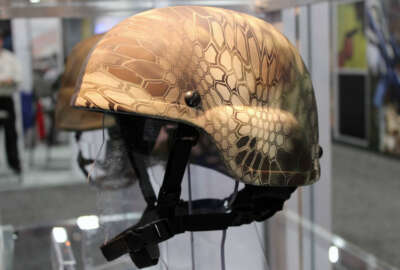The Defense Department will soon release a plan that it is calling a “paradigm shift” in how it approaches brain health in the military.
The strategy moves away from the old way of addressing dangerous exposures to the brain as single, standalone incidents, and instead considers those exposures in a broad spectrum over a service member’s career.
One of the changes, according to the plan that is in final draft form, is quantitatively documenting warfighters’ cognitive abilities through testing from the beginning of their careers to after they leave the military.
Military physicians will conduct brain health assessments, scans or tests of service members on a more frequent basis.
The military health system currently has between 14,000 and 17,000 visits per month for traumatic brain injuries, according to the Defense Health Agency. That high demand for care is in part what necessitated the need for a plan on brain health, Kathy Lee, a TBI specialist, said in a DHA press release.
“There are multiple, deleterious effects of exposures before traumatic brain injury actually occurs as well as TBI itself,” Lee said. Those include: blast overpressure, blunt force/impact, projectiles, directed energy, chemical-biological toxins, and other environmental hazards.
The warfighter brain health plan has 18 objectives and five lines of effort. The lines of effort include:
- Optimizing cognitive and physical performance
- Identifying, monitoring and mitigating brain exposures
- Preventing and minimizing TBIs
- Reducing the long-term effects, and
- Advancing brain health science.
The plan comes from a 2018 DoD directive that called for a single approach to brain health. DoD spent 18 months working on the plan and it is expected to be approved by the end of the year.
To address the lines of effort, DoD will align brain health research and acquisition to current and emerging threats. It will also maximize research opportunities will government agencies and academia and give researchers more data regarding brain exposures.
Service member concerns over brain health have been on the rise. According to the DHA release, one of the top concerns was a perceived disconnect between the medical communities’ efforts to inform service members about the importance of brain health and the severity of brain injuries.
Service members were also worried about the “warrior mindset” that can discredit struggles or concerns because they have a desire to complete the mission or compare themselves to service members in worse situations.
TBIs and brain health were a front-and-center concern after the Iranian attacks on Ayn Al-Asad Airbase in Iraq last year when more than 100 troops were diagnosed with brain injuries.
Joint Staff Surgeon General Brig. Gen. Paul Friedrichs said there was a spectrum of injuries to the brain after the attacks.
“The most obvious one is if it actually causes an immediate bruise to the brain itself, and sometimes that can cause bleeding within the skull, or an injury that usually is going to be readily apparent. Other times, it can cause injury at the microscopic level, not as readily apparent, where individual nerves are damaged or torn, sometimes called shearing. If you can picture a nerve that gets pulled by the blast effect, that’s something that is harder to see on imaging studies, but still, a very real damage within the individual nerves that are damaged there.”
Congress investigated military brain health back in 2017 and found that DoD did not have many answers for addressing new research that found how sensitive the brain is to subconcussive hits and blast waves.
“You shoot a .50 caliber that’s about half a PSI of pressure wave, a breecher you’re seeing maybe two PSI, but a breecher may see four or five hundred of those. Then certainly an IED can be something much higher than 10 or 15 [PSI]. We’re very worried about what we see downstream,” then-DoD Director for Military Health Policy and Oversight Capt. Michael Colston said at the time.
He added some studies of troops are showing brain lesions associated with blast injuries.
“There’s a lot of crossover in lesions that we see in the brain, but this particular lesion was at density junctions. In other words, right where you would deposit injury from a blast wave. A blast wave isn’t just running 25,000 feet a second through the brain there’s also a coup, contrecoup injury where your brain is sloshing around in your skull and obviously fragments,” Colston said. “There’s all kinds of work to do in the research realm that we are working on assiduously and we need to do it fast because certainly the next battle is out there.”
Copyright
© 2024 Federal News Network. All rights reserved. This website is not intended for users located within the European Economic Area.

